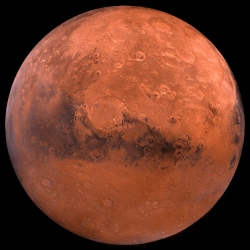
Space exploration has long utilised solar to power probes that have been sent to the depths of space. A lot of man-made objects that are far from the surface of this planet have used solar: Rosetta and Philae which reached and landed on the comet 67P rely on solar.
Mars Rovers have solar arrays that keep them powered and the MESSENGER mission to Mercury used solar panels as its main source of power. “Power availability can limit almost all aspects of a space mission from payloads, propulsion and communication systems to life support and surface mobility for human space missions,” says a NASA research paper recently published online.
The paper Solar Power For Future NASA Missions, written by researchers at Glenn Research Center, says that solar power in space may have a more influential future than you would imagine. “With continued incremental development via new materials and manufacturing techniques, solar cells may become relatively inexpensive, light, and versatile enough to be integrated into all structures, fabric, vehicles, sensors, and other exploration systems, serving a multifunctional purpose of providing primary power as well as other possible applications.”
Further trips to Mars or asteroids are always being considered, and one way that makes them cheaper, essential for when we want to inhabit other parts of the galaxy, is using solar to power the travel. The Solar Electric Propulsion (SEP) project that’s being run is looking at developing “critical technologies” that will make difficult missions easier.
“High power and high efficiency SEP systems will require much less propellant to meet those requirements,” the researchers write. “The new system will use xenon propellant energized by electric power from solar arrays and use 10 times less propellant than a chemical propulsion system like the engines on the space shuttle.”
They go on to say that large solar arrays and “high power thrusters” are being created for future launches. These arrays must be able to fit into small loads when they are packed for launch and once they are in space must be able to unfurl and capture as much solar energy as possible. Flexible solar technology is likely to be part of the key to unlocking a maximum solar surface area and there have been recent breakthroughs in the field by MIT researchers.
NASA researchers are already creating two “20kW-sized deployable solar arrays”, and one research project is building solar arrays of around 1500m2 that can be stored and unfurled in space.
